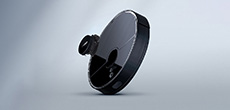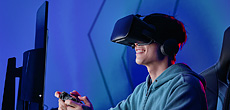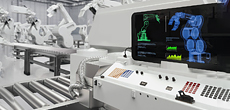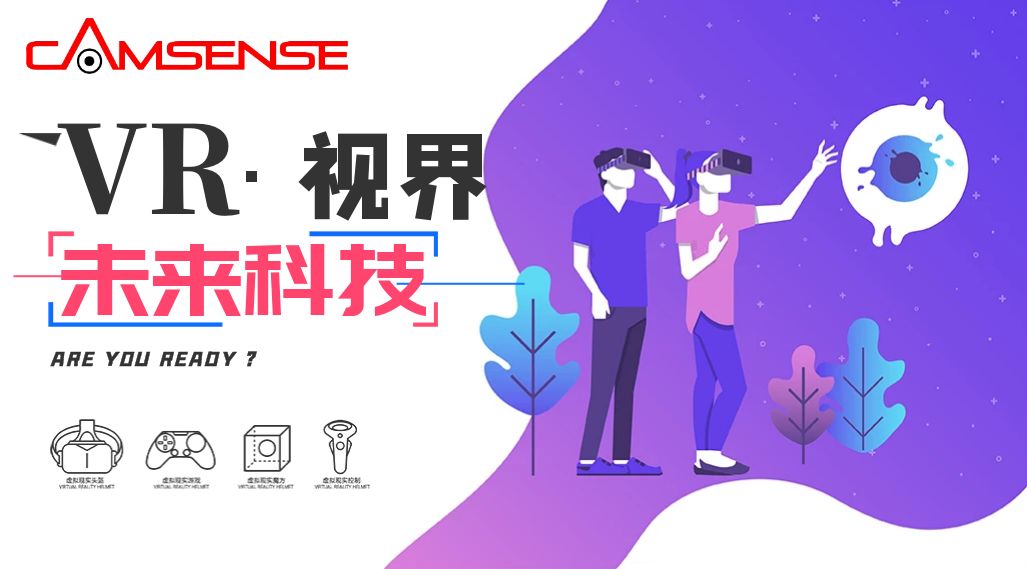In the robots vacuum industry, behind the market competition among brand companies such as Ecovacs, Xiaomi, and 360, is the situation of upstream suppliers. Christopher has been focusing on computer vision technology for nearly two decades. Five years ago, he founded Camsense, dedicated to the research and development of high-precision positioning vision sensors. The process of technology commercialization is difficult and difficult, and its "Camsense" series of fist products have now achieved mass production. In the second half of the artificial intelligence application landing, Camsense has to "lift a sigh of relief".
In the summer of 1956, in the small town of Hanover, New Hampshire, a group of masters held a two-month artificial intelligence seminar at Dartmouth College, an Ivy League school. The Rockefeller Foundation provided $7,500 for the conference. Financial support, that year is considered the first year of artificial intelligence.
Today, since artificial intelligence entered the commercial application stage in 2015, it has gradually landed and blossomed in many industries. Statistics from the "China Artificial Intelligence Industry Market Prospect and Investment Strategic Planning Analysis Report" show that the scale of China's artificial intelligence market has exceeded 10 billion yuan in 2015, and it is predicted that it will reach 71 billion yuan in 2020.
In addition to the frequently mentioned machine learning, knowledge graph, and human-computer interaction technologies, the development and application of computer vision has given artificial intelligence a pair of "wisdom eyes", which is one of the key technologies to realize intelligent manufacturing. Shenzhen Camsense Co., Ltd. (hereinafter referred to as "Camsense") focuses on visual-spatial positioning technology, and is the first domestic enterprise with sub-millimeter positioning accuracy in monocular large space.
From the cloud to the landing, the infrared optical positioning algorithm based on independent intellectual property rights is equipped with high-performance ASIC image processing chips. The consumer-grade lidar sensor CamsenseX1 designed and manufactured by it has been commercialized by first-line brands such as 360 and Feike, and the shipment volume has reached Hundreds of thousands of units; professional-grade industrial testing equipment CamsenseM Pro is commercially available in the robotics laboratories of CTI, Haier, Midea, and 360; the mobile high-precision positioning system CamsenseS has passed the acceptance of COMAC.
tempering technique
17 years ago, Christopher, the founder of Camsense, was still studying for a master's degree in image processing and computer vision at Tsinghua University, under the tutelage of Dai Qionghai, an academician of the Chinese Academy of Engineering and a professor at the Department of Automation of Tsinghua University. Christopher's study of this major was not an established choice for employment. At that time, vision-related technologies were immature, practical applications were still shallow, and there were few companies in the industry, but he saw one thing very clearly: "Compared with hearing and touch, visual The information it brings to people is the most abundant, and visual technology must be the same as the computer.
In 2005, after working at Bell Labs in Chicago for two years, Christopher returned to China and came to Shenzhen. At that time, Shenzhen’s colleges and universities were lacking in resources, and there were many foreign companies. Today’s industry giants are trying to survive the calamity. In early 2000, the IT bubble burst, the infrastructure investment in the telecommunications industry dropped sharply, Huawei’s performance declined sharply, and it was busy saving itself. Although Tencent was listed in Hong Kong in 2004, it also faced the dilemma of tight internal and external conditions.
At that time, there was also an article called "Heaven to the left, Shenzhen to the right" which swept the crowd. ." At that time, Shenzhen was not an ideal choice, but "Women Sing and Husbands Follow", Christopher finally settled here. The city's metabolism is very strong. From now on, the sea breeze from the Pacific Ocean has been blowing continuously, and the craters of technology-intensive enterprises have erupted one by one.
The first thing that touched Christopher's entrepreneurial nerve was the application of computer vision in the field of somatosensory interactive games. At the end of 2006, Japan's Nintendo launched a new console "Wii". The new gamepad for the Wii introduced somatosensory action into the TV game console for the first time, refreshing the player's experience of traditional games. Once the product was launched, it was extremely popular. In 2007, Christopher returned to the bank with a hard-core technology in his hand, and began to pursue entrepreneurial opportunities. He founded Dongyue Online with five founders, focusing on home somatosensory game consoles.
At that time, the positioning technology in the entire smart field of mobile phones, drones, and wearable devices generally used the inertial measurement unit IMU composed of accelerometers and gyroscopes, but in the VR field, the IMU lacked more dimensions and more accurate data, and the ceiling was obvious.
Christopher starts from the bottom, independently develops computer vision algorithms and chips, and specializes in binocular vision positioning technology. The binocular system is complex and requires a large amount of computation. It can locate a single target point in a single frame, without geometric constraints on the target object, flexible applications, and positioning. Higher accuracy. However, after landing, the sales of the products were dwarfed by that. To investigate the reason, the company's game development and production capabilities were weak.
If the shortcomings are not filled, it will be difficult to achieve large-scale mass production. In early 2014, Christopher left and founded Camsense. Before making this decision, he thought a lot. After nearly 60 years of accumulation and development, computer vision has experienced explosive growth in application fields. In addition to computers, mobile phones, transportation, medical care, and robots are widely used. As a technology-based upstream component supplier, it is inherently characteristic that it can radiate to multiple downstream industries. However, based on previous technical accumulation and practical experience, it is easiest for Camsense to start from the TV industry.
Qvod is the first major owner of Camsense. It plans to transmit the content of smart terminals such as mobile phones and PADs to large screens such as TVs for display and interaction, bringing users a better Internet entertainment experience and revitalizing the C position of TV home entertainment.
As an angel investor, Wang Xin is optimistic about Camsense's technical solutions, and wants to realize intelligent operations such as remote remote control and somatosensory games through the 0TT set-top box combined with Camsense's cameras. Qvod also set up an office space for Camsense in the Mai Kelong Building. For start-ups, it is like a sunny day encountering an east wind. However, after only three months, an accident happened to Qvod.
Five years later, Christopher recalled that the incident happened suddenly, "No one knew what was going on, they looked at each other, and they were all stunned." We are all working here, and there are more than a dozen mouths waiting to be paid every day, what should I do?" Christopher carried out emergency self-rescue. In July 2014, Camsense welcomed its first customer in the real sense - Skyworth, Camsense needed To provide cameras for Skyworth TV, the product is scheduled to be launched in October, leaving little time for Camsense. "Our team's combat effectiveness is still relatively strong, and it is not easy to quickly catch ourselves in extreme situations. Only by doing a good job in business can we prove ourselves to others and have the ability to continue."
Then, Camsense entered the VR field in full swing. Its Marker-based monocular positioning camera CamsenseM2, whose performance is benchmarked against the Oculus constellation system, has a positioning accuracy of less than 2 mm, which is 10% higher than the accuracy of the Oculus positioning system. Compared with binocular, the advantages of monocular vision positioning technology lie in its simple system, small computation, low cost, and suitable for commercialization. Tencent, iQiyi, and Huawei's technology products equipped with Camsense are surfing the VR field. However, the actual application of VR headsets has not received a lot of applause. The body is heavy, wearing it will cause dizziness, and the content is not rich enough. In addition, the price is high, and the maturity of the product and the user experience are far from the expectations of consumers.
Will the VR industry be cold? In January 2017, at the CES in Las Vegas, USA, Oculus, HTC, Sony and several industry leaders disappeared. Compared with the spring of VR products in 2016, bees flew and butterflies danced, and many people participated in this exhibition. are SMEs. Christopher was very sensitive: "At that time, we felt that there was a problem when we saw it. If the emerging industry did not have the guidance of giant education, how could it advance so quickly?" The spatial positioning technology has become a golden armor and silver scales, and the positioning accuracy is greatly improved, which also lays a solid foundation for future business expansion.
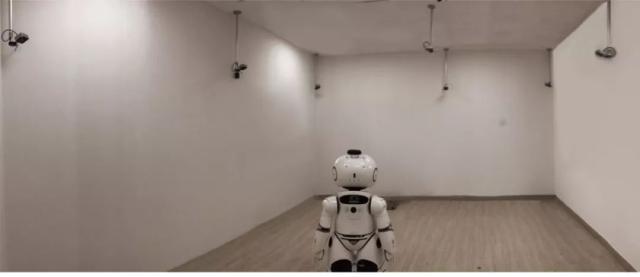
super supplier
In April 2017, a sentence from the investment department of Ecovacs, a giant in the home service robot industry, made Christopher flash with inspiration, "Can your technology be applied to the sweeping robot as a lidar?" At present, Christopher organized the team and spent three months to conduct preliminary research on the market, technology, competitive products, etc. In this action, Christopher was cautious: "It is a very important decision for us, because we choose the wrong one again. There may be no chance." Camsense's entry into the VR field is actually crossing the river by feeling the stones. The investment in technology research and development is very small, and the revenue is very small.
Christopher is quite confident that the company's technology can reach the forefront of the industry. What he is worried about is whether the chosen industry is right or not, and whether the market will work. Compared with the red ocean and the blue ocean, Christopher prefers the light red ocean, that is, the industry has been proven by the market, but the competition is moderate. Next, sooner or later, Camsense will become a vision sensor ODM supplier and enter the sweeping robot industry at the right time.
The main function of the sweeping robot is to complete the cleaning task independently without human intervention. The completion of the cleaning task can be divided into 4 steps, namely positioning, composition, planning, and cleaning. The cleaning strength and intelligence of the sweeping robot are mainly reflected in the path planning ability. The path planning depends on the robot's positioning ability and map construction ability. The mainstream technology currently applied is SLAM, which can be described as the robot in an unknown environment, from an unknown location. Start to move, estimate the position and map construction based on built-in sensors for self-positioning, and build incremental maps on this basis to achieve autonomous positioning and navigation, and sensors are equivalent to the "eyes" of the sweeping robot.
After several trials and integration of the visual positioning algorithms and chips accumulated since 2007, Christopher found that Camsense has obvious advantages in the second technical direction of the lidar field - visual positioning technology measurement. Camsense's original area array lidar sensor + dedicated ASIC chip adopts the industry's original area array partitioned image processing algorithm to adaptively divide an area array area into multiple different linear photoreceptor sub-areas, and the vertical field of view can It can reach 3040 degrees and the frame rate can reach more than 2000Hz. It is no longer restricted to expensive linear lidar sensors, which can save 40% of the cost for downstream customers. In November 2017, its consumer-grade lidar CamesenseX1 was unveiled to the public at the Tencent Global Partner Conference in Chengdu.
However, at the application level, customers are more concerned about whether mass production can be achieved on the basis of ensuring high performance and high quality of products. The first manufacturer of Camsense is 360, and the 360 robot vacuum cleaner is planned to be listed on the "Double Eleven" in 2018. In order to find the most suitable manufacturer, Christopher traveled almost all over the Pearl River Delta, communicated with the heads of the various factories, and went to the factory to see the production line. At this time, the first problem for Christopher was to set the production inspection standards of the products and the hardware manufacturing process. supply chain management issues.
The lidar industry has not yet formed a unified standard, and most customers do not know the specific threshold ranges for the required service life, impact resistance, high temperature and low temperature resistance and other parameters of the lidar sensor. Camsense organizes the R&D team, the testing team, and the customer support team to check, collect information, and provide timely feedback and processing. Based on the highest requirements, the improvement is carried out. After repeated inspections and iterations in the actual mass production process, a complete set of product production is summarized. Standard and control process, production and manufacturing strictly abide by the supplier import process and high-standard quality assurance agreement, and even control the accuracy of screws.
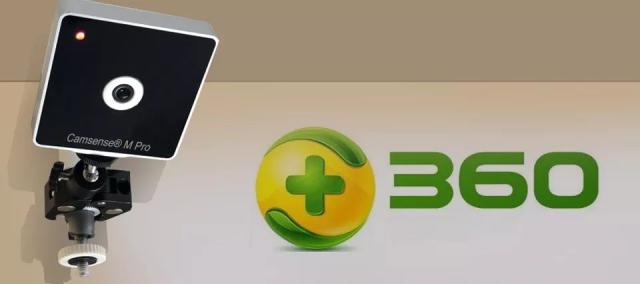
Technological innovation and increasingly mature manufacturing capabilities enable its products to take into account both low cost and high performance. Since its launch, it has continued to prey on market share. Currently, CamesenseX1 has shipped hundreds of thousands of units, serving customers including 360, Flyco and other first-line brands.
For suppliers, every move of a brand owner can affect its order volume. In order to enhance the company's comprehensive strength and anti-risk ability, Christopher adopts a horizontal expansion strategy and multi-industry radiation. Since its establishment in 2014, Camsense has successively deployed Commercial service robots, industrial robots, aviation, smart home terminals and other products and services.
With technological breakthroughs in sub-millimeter positioning accuracy, Camsense has developed a set of professional-grade industrial inspection equipment, CamsenseM Pro, which can provide mobile robots such as sweeping robots and drones with functions including route planning and calibration. The testing plan has won the favor of leading companies such as China Testing Group. In 2018, Camsense and Shanghai University jointly developed CamsenseS, which benchmarked against the OptoTrack series products of NDI, a leading company in the industry, focusing on medical, aviation and other fields.
The main equipment of this system is a large mobile high-precision optical positioning camera. The whole system is equipped with high-performance CCD optical sensors and high-sensitivity positioners. Combined with the multi-sensor fusion technology independently developed by Camsense, it can achieve Sub-millimeter-level precise positioning in a large space, with a positioning accuracy of 0.2mm, and real-time tracking of the six-degree-of-freedom state at the end of the robotic arm. On March 27, 2019, it was officially delivered to COMAC for use.
Deloitte research shows that the total financing scale of smart manufacturing in 2018 reached its peak in recent years, reaching US$32.515 billion, accounting for nearly 15% of the total financing scale of the entire industry. In the era of Industry 4.0, Shenzhen, relying on the strong manufacturing capabilities of Dongguan and Foshan and the planning of the Guangdong-Hong Kong-Macao Greater Bay Area, has a good innovation ecosystem and application scenarios, and the future can be expected. Although the prospects are broad, Christopher increasingly feels that it is more difficult for companies to survive and grow in China.
The product market in the United States has been monopolized by industry giants, and the intensity of corporate competition and innovation activity is gradually lower than that of China, while domestic high-tech companies are in an active earthquake zone. According to the Shenzhen Special Economic Zone News, there are currently about 636 AI enterprises in Shenzhen, of which over 70% have been established within five years, and nearly 70% of them are concentrated in the application layer.
"In terms of core components, such as reducers for industrial robots, Japan has done better, but in terms of robot applications, especially consumer-grade home service robots, China has come to the forefront of the world.
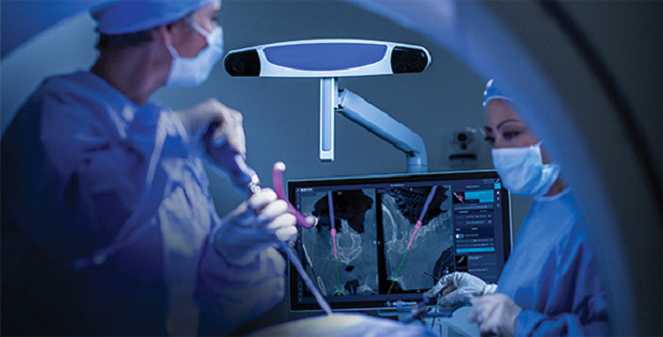
"In terms of core components, such as reducers for industrial robots, Japan has done better, but in terms of robot applications, especially consumer-grade home service robots, China has come to the forefront of the world. The domestic competition is far better than Overseas, if you win, you will be the best when you put it outside."
In the lidar sensor industry, the degree of marketization is getting higher and higher, the competition is becoming more and more fierce, and the technical products continue to iterate. Asia Optical and South Korea's LG are strong. Although Camsense has applied for more than ten high-value patents, and has established its own patent barriers in 4 countries and regions in China, Europe, and Japan, it must always maintain a state of preparation and create continuous barriers through research and development.
Climbing in the field of visual positioning technology for nearly 20 years, it is always more suffering than joy. "Most of them are not red carpets, but thorns, pits, and stones. You have to be the engine."
Entrepreneurs are inherently optimistic, good at challenging difficulties, and strong will is an innate talent, Christopher relies on it to get to the present. When I first graduated, I liked to see the struggle history of entrepreneurial celebrities. Today, I feel that they are too far away, and I prefer to learn from the competitor Asia Optical.
Christopher said that he does not smoke or drink, and is a very boring person. Today, as the CEO on behalf of the company, I talk about cooperation, and tomorrow I will go to Dongguan to work as a "supervisor" in the factory. I am happy to find the talent I like, and sad for a colleague to leave. Life and work are full of joys and sorrows. Next, there is one thing that will make the Camsense team look good. The company is happy to relocate. The new office is located in Tianan Yungu, next to Huawei.
